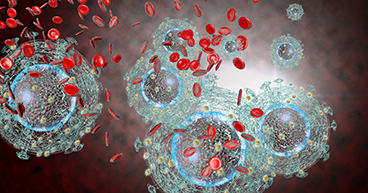
We live in a wireless world. Many of our phones, tablets, computers and televisions are connected to the internet without cables. Smart home devices can turn off lights from across the room, and security cameras can send images from across town. Other common household wireless devices include:
- Smart watches
- Baby monitors
- Cordless telephones
- Ceiling fans
- Garage door openers
- Routers and signal boosters
- Computer mice and keyboards
- Thermostats and smart meters
- Video games
The estimated number of wireless devices worldwide has nearly tripled to 22 billion since 2016. A report by the consulting firm Deloitte estimates that the average American household has as many as 25 wirelessly connected devices.
That surge has some doctors and researchers concerned that the daily bombardment of a variety of electromagnetic signals may increase our cancer risk.
What do the experts say?
In 2015, a group of 250 scientists signed a petition to the United Nations and the World Health Organization (WHO) communicating their “serious concern” about the health risks related to the electromagnetic fields that are released by wireless devices. The scientists pointed to data showing electromagnetic fields generated by cell phones, wi-fi and baby monitors may impact human health. Their petition noted that children may be more susceptible to the negative effects of electromagnetic fields than adults. Cancer, structural and functional changes to the reproductive system, neurological disorders, and learning and memory deficits are among the potential harms associated with electromagnetic fields, the scientists wrote.
The International Agency for Research on Cancer (IARC) has classified electromagnetic fields, especially from cell phones, as “possibly carcinogenic.” Noting that “there could be some risk,” the IARC concluded in 2011 that “we need to keep a close watch for a link between cell phones and cancer risk." IARC Director Christopher Wild, PhD, called for additional research on the long-term, heavy use of mobile phones and recommended the use of “pragmatic measures to reduce exposure such as hands-free devices or texting.”
That same year, though, a systematic review found “no statistically significant increase in risk for adult brain cancer and other head tumors from wireless phone use.” The U.S Federal Drug Administration (FDA) has also determined that the current limit on radio frequency energy set by the U.S. Federal Communications Commission continues to protect public health. According to the FDA, which relies on epidemiologic studies, public health surveillance data and supportive laboratory studies on cell phone radiation, there’s “no consistent or credible evidence of health problems caused by exposure to radiofrequency energy emitted by cell phones.”
What’s the difference? Ionizing and non-ionizing radiation
Wireless technologies use forms electromagnetic waves to carry signals from one place to another. Electromagnetic waves are forms of radiation that come in two main forms: ionizing and non-ionizing.
Non-ionizing radiation is generally considered harmless to humans. Examples of non-ionizing radiation include radio waves that transmit sound and visuals to a radio or television, or when you use the remote control to change the channel on your television. Microwaves and infrared radiation are considered non-ionizing. Cell phones release low levels of a type of non-ionizing radiation called radiofrequency energy.
Ionizing radiation is described by the National Institute of Environmental Health Sciences as mid- to high-frequency radiation that can, under some circumstances, lead to DNA or cell damage after extended exposure. Examples of ionizing radiation include specific types of ultraviolet light, X-rays and gamma rays.
What about Bluetooth technology?
Many wireless devices use Bluetooth® technology, which may be used to connect your phone to your car or your televisions to remote speakers. With your Bluetooth earbuds in, you can listen to an audiobook loaded on your smartphone or crank up your playlist during your daily workout. Billions of Bluetooth devices are in use today.
When Apple released its Bluetooth AirPods in 2019, it raised questions about whether Bluetooth technology may raise cancer risk. Bluetooth uses the generally harmless non-ionizing type of electromagnetic waves. In fact, the American Cancer Society (ACS) says Bluetooth earpieces send out radiofrequency waves at significantly lower levels than even cell phones.
Armin Ansari, PhD, a health physicist who leads the radiological assessment team at the U.S. Centers for Disease Control and Prevention (CDC) told Insider that people concerned about reducing cell phone radiation should consider wearing a Bluetooth headset or headphones.
What’s the difference between Bluetooth and wi-fi? Both use forms of radio waves to send signals, but they differ in other ways.
- Bluetooth uses short-range signals to allow devices to connect to one another and transfer data. It does not need an internet connection to work.
- Wi-fi allows devices to connect to the internet. It requires an internet connection to work.
What can you do?
Opinions vary on whether cell phones and other devices that produce radiofrequency energy cause cancer. The ACS says on its website that it “does not have any official position or statement on whether or not radiofrequency radiation from cell phones, cell phones towers, or other sources is a cause of cancer.” Most U.S. government health agencies, including the CDC, FDA and National Cancer Institute, have stated there’s no evidence to support a connection between wireless devices and cancer.
The Federal Communications Commission agrees, but suggests consumers may want to take steps to reduce their exposure to electromagnetic radiation, especially from cell phones. “The FCC does not endorse the need for these practices,” the agency says, but it offers these steps to reduce exposure for those who are still concerned:
- Reduce cell phone use.
- Keep your phone at distance when not in use.
- Use corded earphones or headphones.
- Use a speakerphone.
- Text instead of talking on your phone.


